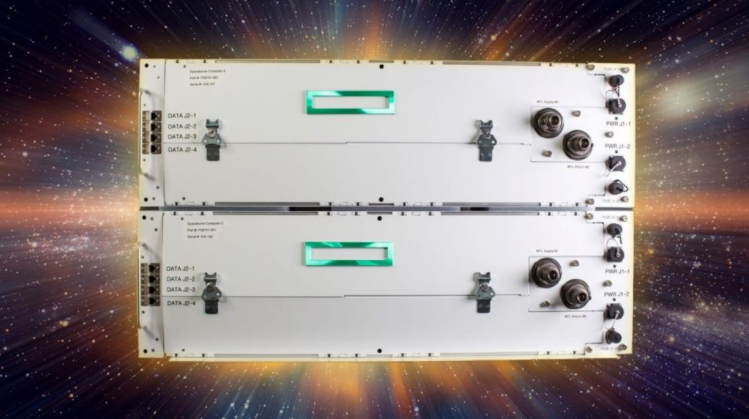 EMERGING TECH
EMERGING TECH
 EMERGING TECH
EMERGING TECH
 EMERGING TECH
EMERGING TECH
Hewlett Packard Enterprise Co. will send a specialized edge computing system to the International Space Station this month to give astronauts access to more processing power for research projects.
The initiative, a collaboration among HPE, Microsoft Corp. and NASA, was announced today.
The system HPE is scheduled to send to the station is called the Spaceborne Computer-2. The original Spaceborne Computer was launched in 2017. According to HPE, the new version has twice the computing power and includes graphics processing units to speed up workloads such as machine learning models.
The Spaceborne Computer-2 is based in large part on commodity, commercially available hardware from HPE’s product portfolio. The system pairs the ProLiant DL360 server, which starts at around $1,500, with a Converged EL4000 Edge machine. The EL4000 is a ruggedized converged infrastructure appliance that is normally used in environments like factories.
That the Spaceborne Computer-2 is based on commodity gear is important because using commercial-grade servers in space missions might enable NASA to lower mission costs. Commercially available servers also provide access to the latest chip technologies. Such considerations are only set to become a bigger priority as the agency continues to explore deep space travel programs.
In the more immediate future, HPE’s system will enable astronauts aboard the International Space Station to crunch data more efficiently for research projects. Currently, many computing tasks have to be sent to servers on Earth, which means astronauts must wait until the data reaches the ground and returns. With double the processing power of its predecessor, the Spaceborne Computer-2 will enable more tasks to be performed aboard the station and thereby speed up research.
HPE has already come up with several potential applications for the system. Those include processing the X-ray images and other medical data used to monitor astronauts’ health, as well as research use cases such as analyzing measurements from the many sensors installed on the station.
More complex science initiatives will still require the use of terrestrial computing resources. To support that requirement, HPE has teamed up with Microsoft to link the Spaceborne Computer-2 to the latter company’s Azure public cloud. Applications running on the system will have the ability to offload their most hardware-intensive tasks to Azure via antenna on the ground.
Experts from Microsoft’s research division and recently launched Azure Space group are exploring a number of ways to harness the integration. One idea that has been floated so far: analyzing dust storms observed on Earth to better understand how dust storms on Mars might factor into future missions to the Red Planet. Microsoft also sees potential opportunities to glean new insights into the requirements of growing plants in space.
For HPE, the collaboration with NASA might provide a stepping stone to future hardware deals in the fast-growing private space sector. In conjunction with the announcement of the Spaceborne Computer-2, HPE said today that it’s working with OrbitsEdge Inc. to harden its Edgeline converged infrastructure appliances for use in orbiting satellites. OrbitsEdge provides a so-called satellite bus solution that can protect computing hardware from the harsh conditions of space.
THANK YOU